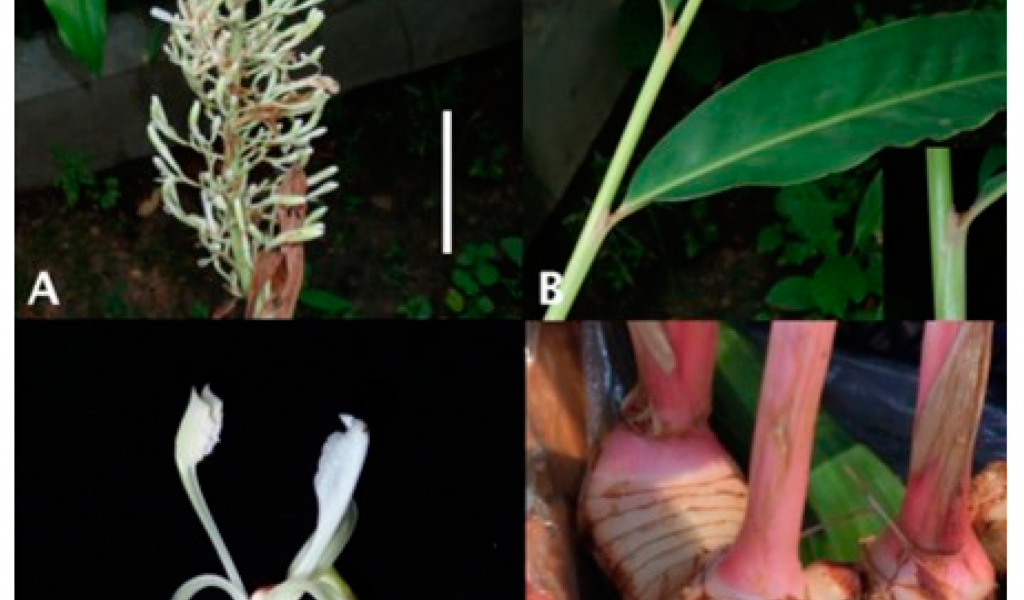ຂ່າ / Galanga
APA 6th ed. ຂ່າ / Galanga. (2021, December 6). Retrieved from https://www.phakhaolao.la/kb/0000015
MLA 8th ed. ຂ່າ / Galanga. Pha Khao Lao, 6 December 2021, https://www.phakhaolao.la/kb/0000015.
Chicago 17th ed. Pha Khao Lao. 2021. "ຂ່າ / Galanga." Published December 6, 2021. https://www.phakhaolao.la/kb/0000015.

Alpinia galanga var. galanga
Alpinia galanga var. pyramidata (Blume) K.Schum
Alpinia pyramidata Blume
Alpinia calcarata var. compacta Gagnep.
Alpinia cernua Sims
Languas galanga (L.) Stuntz
Maranta galanga L.
Zingiber galanga (L.) Stokes
ຂ່າຫຼວງ, ຂ່າໃຫຍ່, ຂ່າບ້ານ, ຂ່າແດງ, ຂ່າໂຄມ, ໜໍ່ຂ່າ, ຂ່າປ່າ
Thai: kha.
English: galangal, galingale, galanga.
Several species of kha are used in Laos but taxonomy is confusing.
Kha leuang, kha nhai and kha ban are often domesticated in village
areas, but kha daeng, kha pa and kha khom grow naturally in the
forest.
A perennial herb that grows 1-2.5 m tall with yellow-brown tuberous rhizomes, up to 5 cm in diameter. Leaves are 30-50 cm by 5-10 cm, sometimes with small hairs; the leaf sheath and pseudo stem are up to 2 cm in diameter. Dense inflorescence appear at the top of stems, up to 20 cm long, while the red-white flowers are 2-2.5 cm by 2 cm. The fruit is ball and/or ellipse shaped, yellow or red when ripe, and up to 8-10 mm in diameter. Seeds are angular, grey-yellow to dull brown, and 1.21.6 cm in diameter.
Fruit and other parts of Kha are aromatic and provide a sweet tasting spice for other foods. The young pseudo stems and young inflorescence are eaten as vegetables. In Laos and Thailand especially, the root stock (rhizome) is commonly used for making sour soups, such as tom yam. Local people also gather the fruit for the Chinese traditional medicine market, where it is used to treat indigestion, stomach ache, diarrhea and vomiting. The volatile oil from the root stocks and leaves is also used as a remedy for impotence and nervousness, and to treat skin diseases. The rhizome and seeds are used as a fragrance in medicine. The red variety of galangal is preferred for medicine in Indonesia, and the white variety’s rhizome is used as a spice or source of essential oil, or to flavor alcohol. Rhizomes are also used to dye fabrics yellow and yellowish-green.
